‘Strange Clay’ review: a mucky, uncanny, visceral survey of ceramic art
At London’s Hayward Gallery until 8 January 2023, group show ‘Strange Clay: Ceramics in Contemporary Art’ sees ceramic artists explore the physical, psychological, political and power of their medium
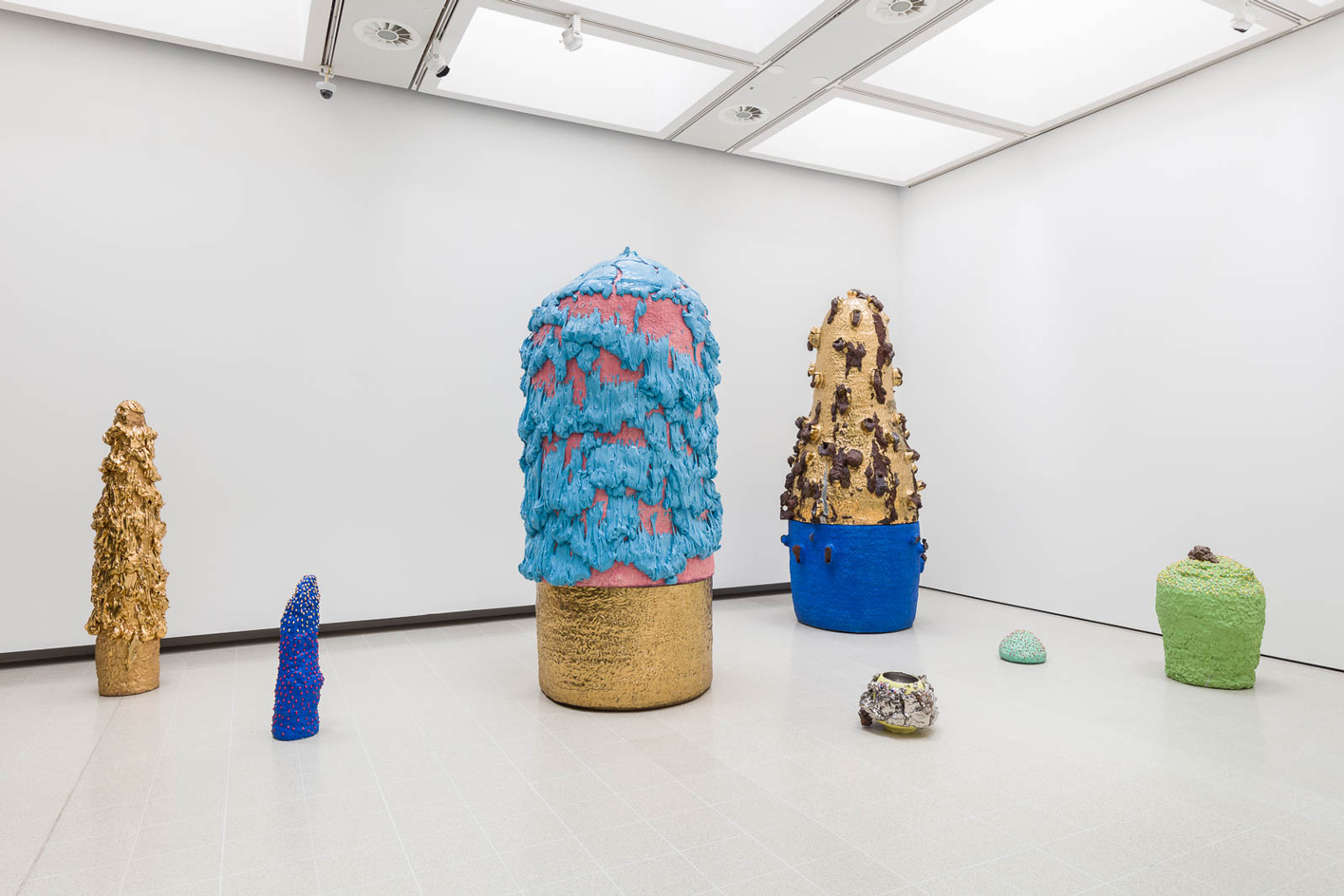
The idea of clay as a serious art form is nothing new. The traditional ‘craft’ connotations of the medium have been slipping since the second half of the 20th century, with clay becoming the material of choice for heavyweights such as Grayson Perry and Betty Woodman. More recently, artists including Lindsey Mendick, Leilah Babirye and Woody De Othello have used it for its raw, political and psychic potential.
These artists are included in Hayward Gallery’s wide-ranging new exhibition ‘Strange Clay’, which presents ceramics as fantastical and uncanny. It also manages to show quite how electrifying this medium can be. The work is vast, totemic, loud and messy. All 23 artists in ‘Strange Clay’ more than hold their own within Hayward’s cavernous brutalist architecture.
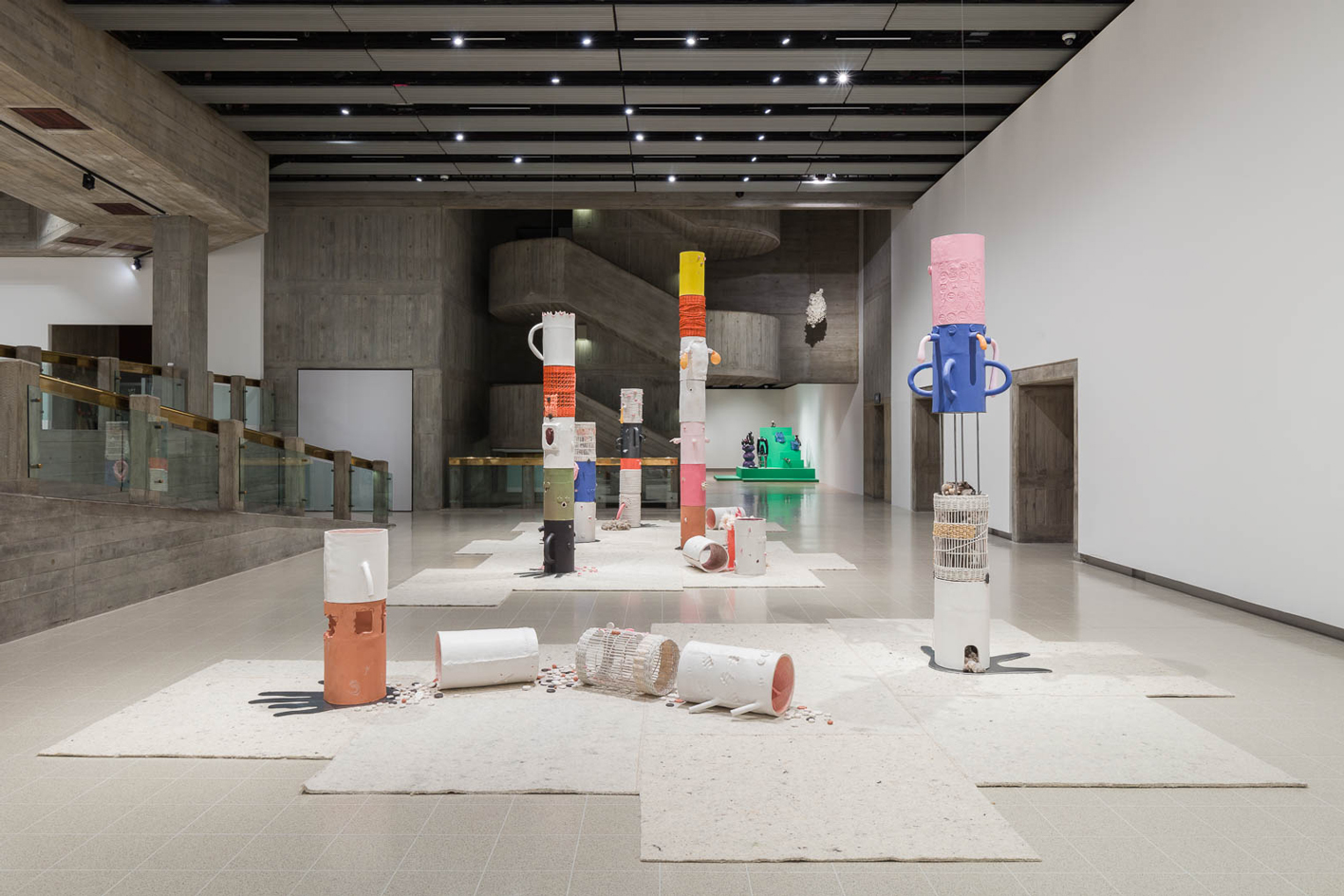
Installation view of Jonathan Baldock and Rachel Kneebone in 'Strange Clay: Ceramics in Contemporary Art’ at the Hayward Gallery
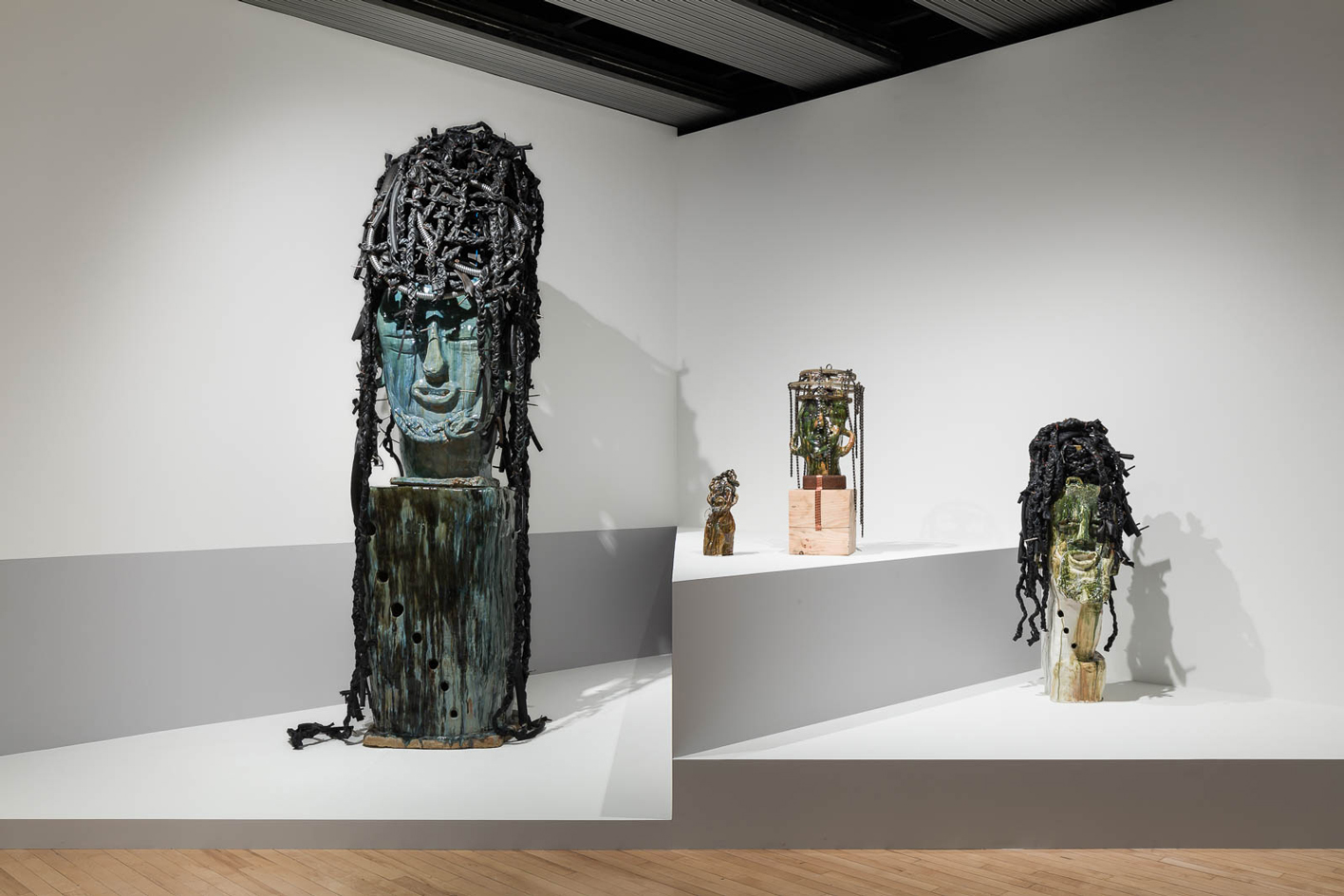
Installation view of Leilah Babirye in 'Strange Clay: Ceramics in Contemporary Art' at the Hayward Gallery
‘The good thing here is that you can put together a really serious installation,’ curator Cliff Lauson tells me. ‘There is domestically scaled work in the show, but you can also really let rip. We wanted to turn the old image of clay on its head and make it really exciting.’ He has been considering the exhibition for the last four years, engaging in long-running conversations with many of the featured artists, whose profiles have continued to soar since its inception.
‘The idea of clay as a serious art form has been bubbling at the forefront of contemporary practice for a while, alongside a wider consideration of craft,’ says Lauson. ‘The journey for many of these artists has come from looking at history through a contemporary lens. Of course, ceramics has a rich history in every country around the world.’
Jonathan Baldock’s imposing Facecrime greets visitors first entering the show. Precarious towers of ceramic cylinders emblazoned with ears, faces and mug-like handles are interrupted by floppy, unmissably phallic, balloon-like forms poking from the sides. The work captures the playfulness of the medium that threads through Strange Clay, often revealing uneasy emotional undercurrents.
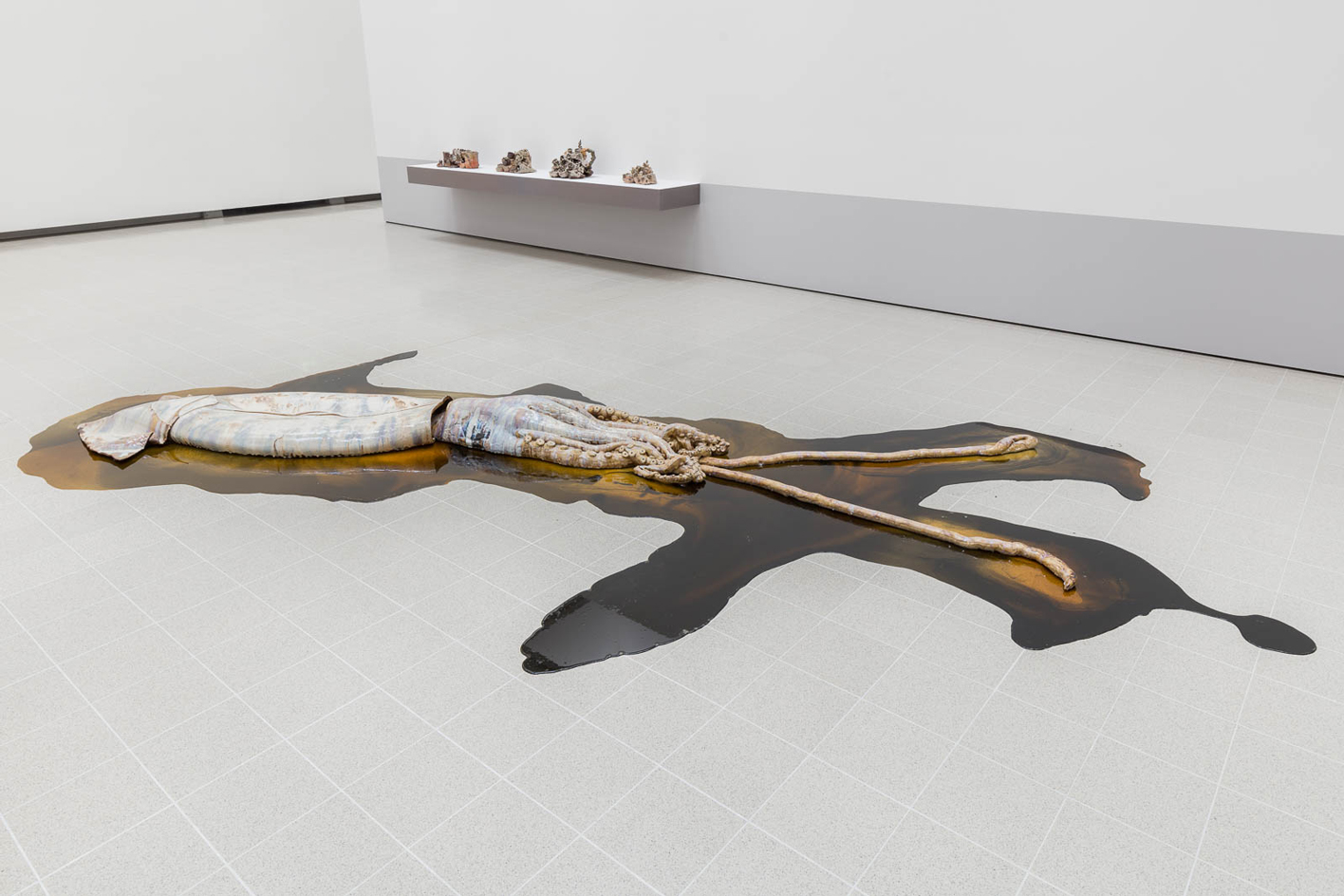
Installation view of David Zink Yi and Aaron Angell in 'Strange Clay: Ceramics in Contemporary Art' at the Hayward Gallery
Eruptions of all kinds also happen throughout the show. David Zink Yi’s giant squid is surrounded by a thick marbled slick of ink; Beate Kuhn’s collection of chalky black ceramics appears ready to burst with glowing goo; Salvatore Arancio’s volcanic forms feature iridescent columns shooting from their bases. Mess, both physical and psychological, can be found everywhere.
Lindsey Mendick brings this untidiness to a thundering climax in Till Death Do Us Part. Taking its title from Madonna’s homage to her famously troubled marriage with Sean Penn (which soundtracks the work), the installation displays the full intensity of domestic life spent with another person. Slugs writhe on the kitchen floor with their guts spilling out; rats clamber over a broken table, surrounded by blood-like splashes of red wine; cockroaches crawl over a worn-out copy of Men Are From Mars, Women Are From Venus. Mendick has poured her own experiences into this piece, creating a complex image of love and the potent battle of wills that often accompanies it.
Wallpaper* Newsletter
Receive our daily digest of inspiration, escapism and design stories from around the world direct to your inbox.
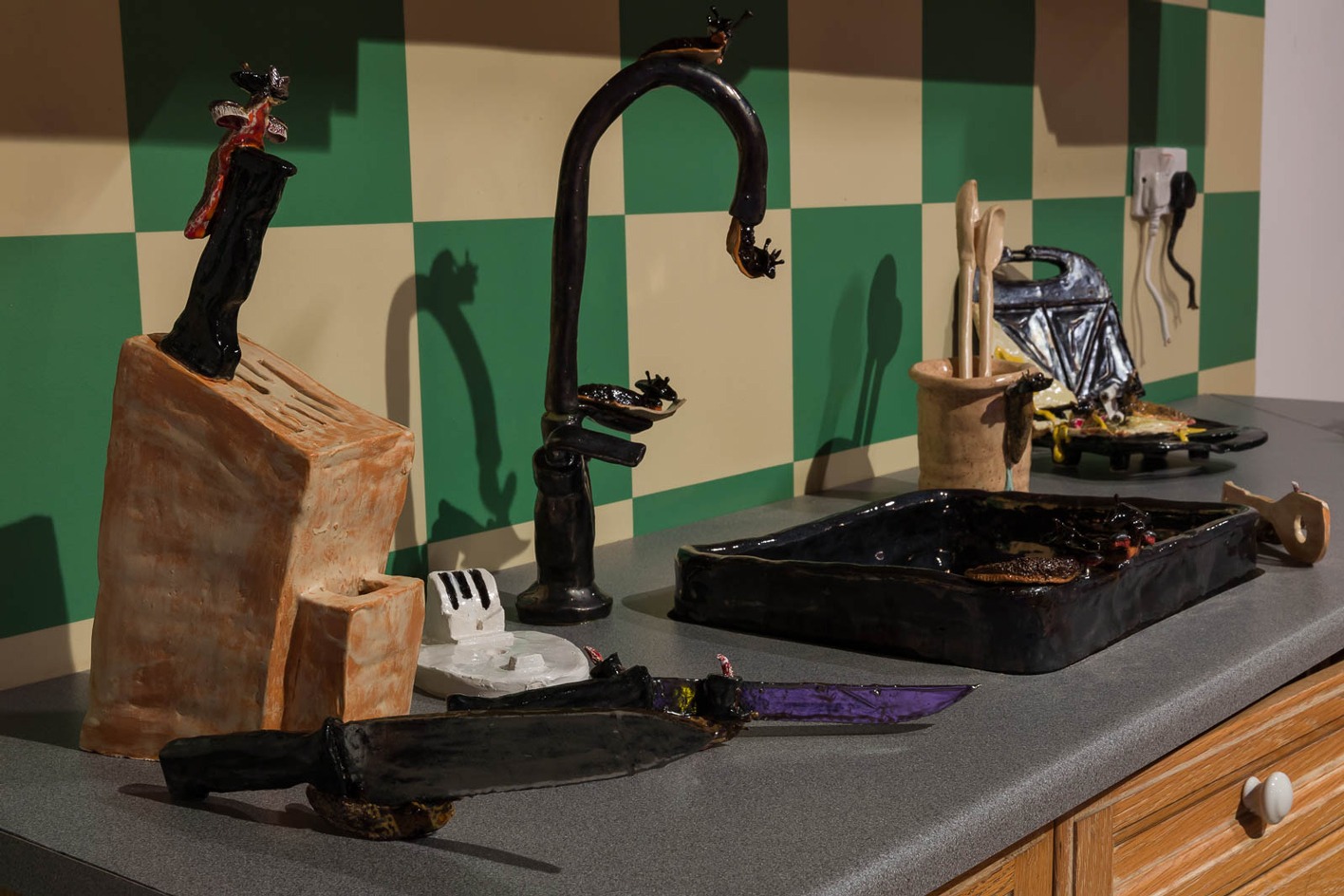
Installation view of Lindsey Mendick in ‘Strange Clay: Ceramics in Contemporary Art’ at the Hayward Gallery
‘It is an emotive medium and I think we relate to it,’ Lauson tells me. ‘Tactility is there in all of the works. It’s really explicit in some. There is this trace of interaction. There is that element of the human and the earth. You can revel in the untidiness of the medium, which is often brought into the final form. It’s also bolstered by the things you can do with surface.’
Leilah Babirye creates similarly powerful work, stretching the material potential of ceramics by combining clay with found objects. In busts ranging from human-sized to 3m tall, she utilises woven old bike tyres for hair and bike chains combined with rusty lights to form a crown. Her use of discarded materials refers to abasiyazi, a Ugandan slur for queer and trans people derived from the inedible part of sugar cane that is thrown out. Babirye symbolically elevates her materials, ‘representing the queer community, my community, in a royal way’.
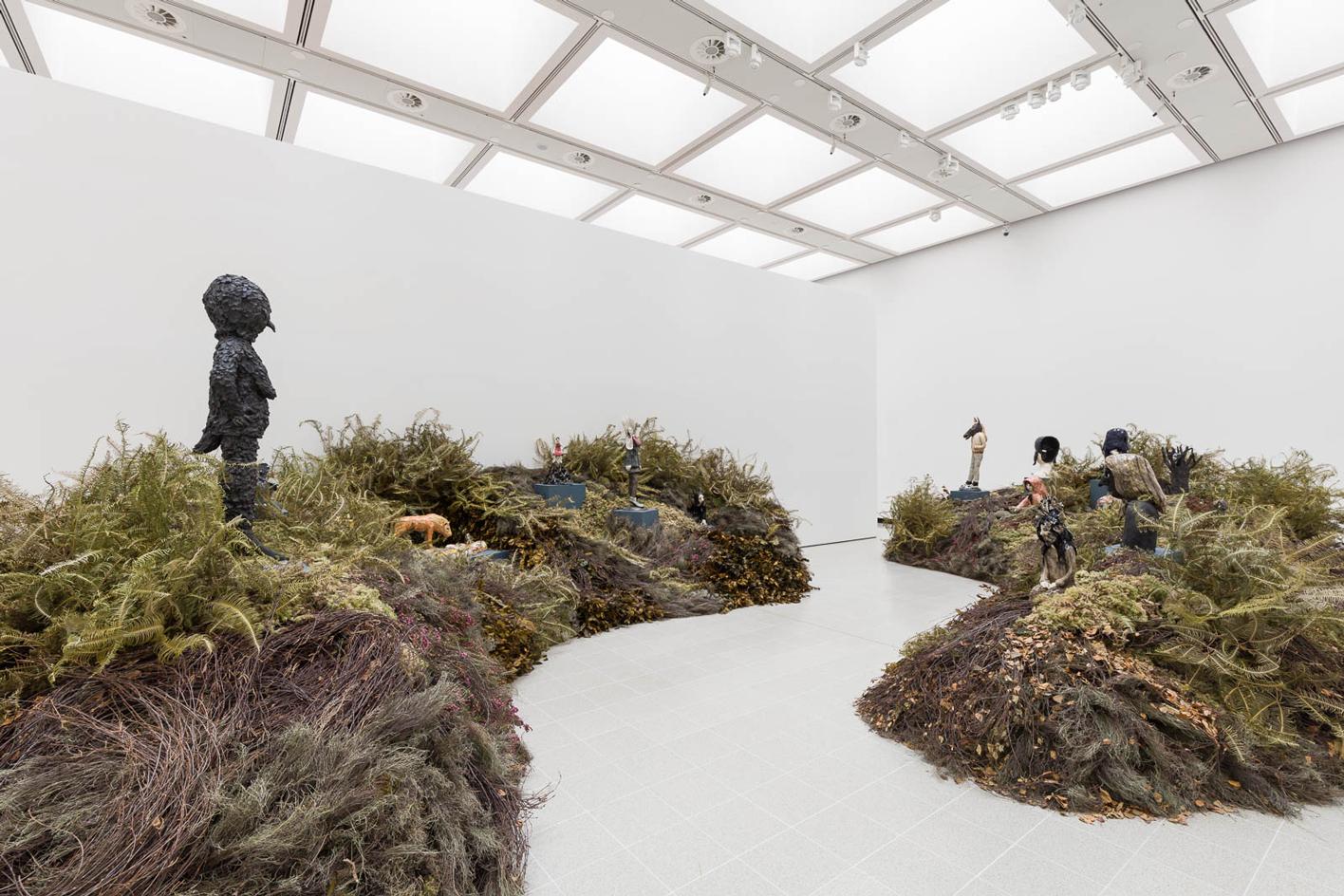
Installation view of Klara Kristalova in ‘Strange Clay: Ceramics in Contemporary Art’ at the Hayward Gallery
This expanded way of working with clay is pushed to its limits by Klara Kristolova. Far From Here features 18 stoneware figures surrounded by dried vegetation, forming a hilly landscape that viewers can walk through. The scent of dried leaves, not dissimilar to chamomile, pervades the space, noticeable before the work is within view. Each of the figures can be seen in a state of transformation, between human, animal, insect and plant forms. She combines gloss and matt finishes on her ceramics, creating an effect more akin to watercolour painting than traditional glazing.
Hayward director Ralph Rugoff mentions that ceramics sit in the middle of painting and sculpture. But this is not the only ‘between’ space that they occupy. There is also a play between liquid and solid; humour and darkness. As displayed in ‘Strange Clay’, this medium is hard to pin down, enabling a conflicted expression of what it means to be human and all of the muck that comes with it.
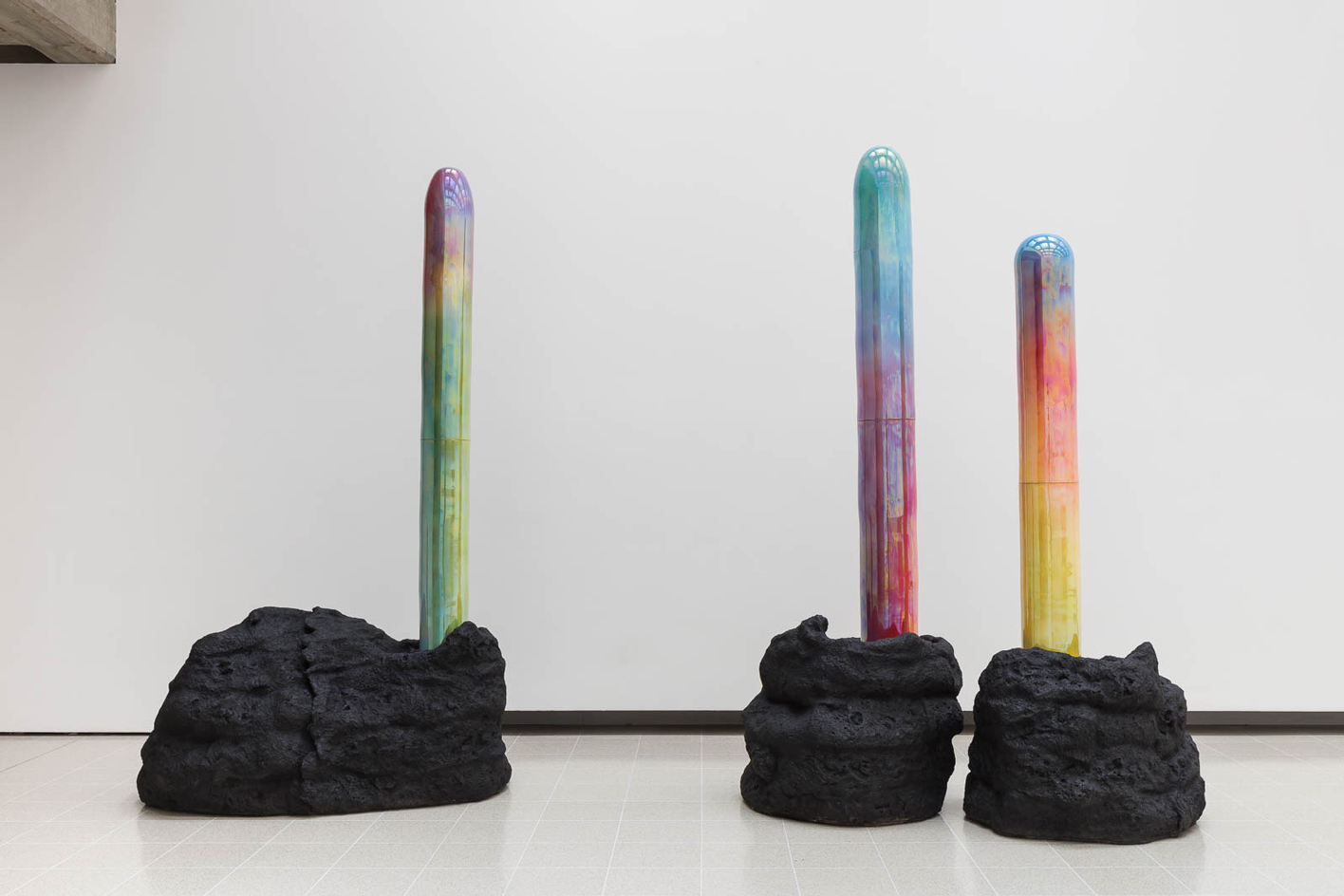
Installation view of Salvatore Arancio in ‘Strange Clay: Ceramics in Contemporary Art’ at the Hayward Gallery
Until 8 January 2023 at the Hayward Gallery, London
Emily Steer is a London-based culture journalist and former editor of Elephant. She has written for titles including AnOther, BBC Culture, the Financial Times, and Frieze.
-
 Put these emerging artists on your radar
Put these emerging artists on your radarThis crop of six new talents is poised to shake up the art world. Get to know them now
By Tianna Williams
-
 Dining at Pyrá feels like a Mediterranean kiss on both cheeks
Dining at Pyrá feels like a Mediterranean kiss on both cheeksDesigned by House of Dré, this Lonsdale Road addition dishes up an enticing fusion of Greek and Spanish cooking
By Sofia de la Cruz
-
 Creased, crumpled: S/S 2025 menswear is about clothes that have ‘lived a life’
Creased, crumpled: S/S 2025 menswear is about clothes that have ‘lived a life’The S/S 2025 menswear collections see designers embrace the creased and the crumpled, conjuring a mood of laidback languor that ran through the season – captured here by photographer Steve Harnacke and stylist Nicola Neri for Wallpaper*
By Jack Moss
-
 Artist Qualeasha Wood explores the digital glitch to weave stories of the Black female experience
Artist Qualeasha Wood explores the digital glitch to weave stories of the Black female experienceIn ‘Malware’, her new London exhibition at Pippy Houldsworth Gallery, the American artist’s tapestries, tuftings and videos delve into the world of internet malfunction
By Hannah Silver
-
 Ed Atkins confronts death at Tate Britain
Ed Atkins confronts death at Tate BritainIn his new London exhibition, the artist prods at the limits of existence through digital and physical works, including a film starring Toby Jones
By Emily Steer
-
 Tom Wesselmann’s 'Up Close' and the anatomy of desire
Tom Wesselmann’s 'Up Close' and the anatomy of desireIn a new exhibition currently on show at Almine Rech in London, Tom Wesselmann challenges the limits of figurative painting
By Sam Moore
-
 A major Frida Kahlo exhibition is coming to the Tate Modern next year
A major Frida Kahlo exhibition is coming to the Tate Modern next yearTate’s 2026 programme includes 'Frida: The Making of an Icon', which will trace the professional and personal life of countercultural figurehead Frida Kahlo
By Anna Solomon
-
 A portrait of the artist: Sotheby’s puts Grayson Perry in the spotlight
A portrait of the artist: Sotheby’s puts Grayson Perry in the spotlightFor more than a decade, photographer Richard Ansett has made Grayson Perry his muse. Now Sotheby’s is staging a selling exhibition of their work
By Hannah Silver
-
 Celia Paul's colony of ghostly apparitions haunts Victoria Miro
Celia Paul's colony of ghostly apparitions haunts Victoria MiroEerie and elegiac new London exhibition ‘Celia Paul: Colony of Ghosts’ is on show at Victoria Miro until 17 April
By Hannah Hutchings-Georgiou
-
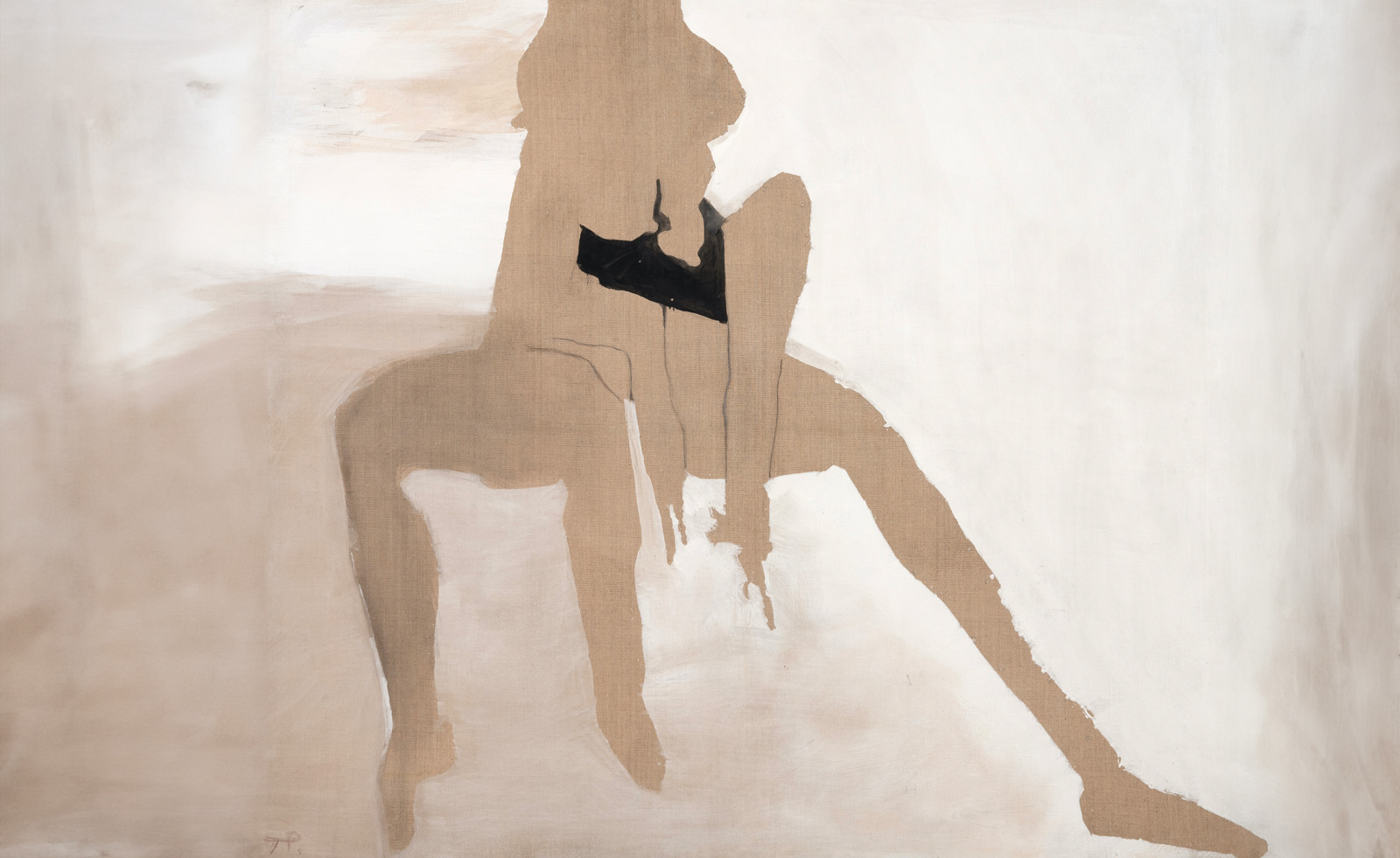 Teresa Pągowska's dreamy interpretations of the female form are in London for the first time
Teresa Pągowska's dreamy interpretations of the female form are in London for the first time‘Shadow Self’ in Thaddaeus Ropac’s 18th-century townhouse gallery in London, presents the first UK solo exhibition of Pągowska’s work
By Sofia Hallström
-
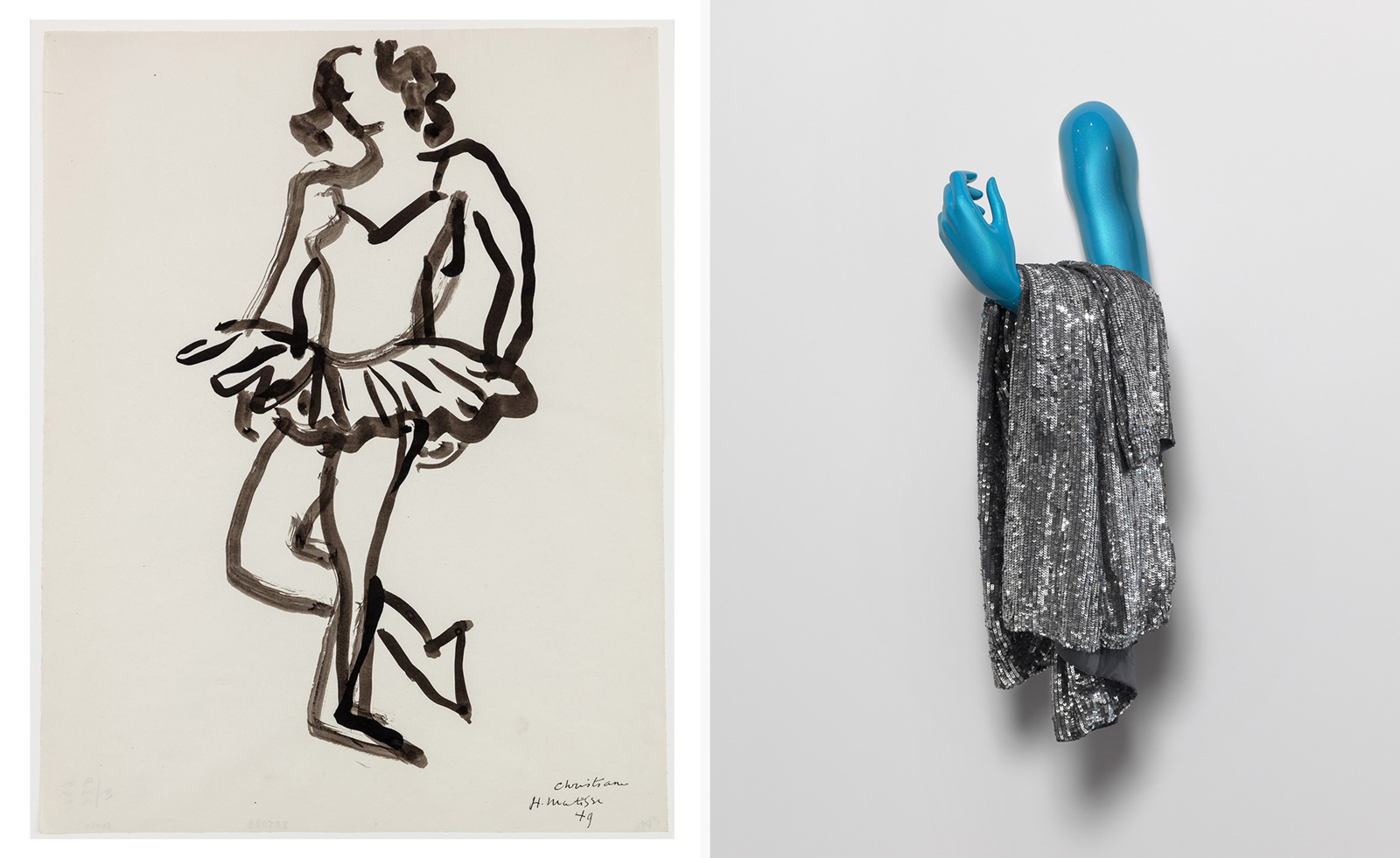 Sylvie Fleury's work in dialogue with Matisse makes for a provocative exploration of the female form
Sylvie Fleury's work in dialogue with Matisse makes for a provocative exploration of the female form'Drawing on Matisse, An Exhibition by Sylvie Fleury’ is on show until 2 May at Luxembourg + Co
By Hannah Silver